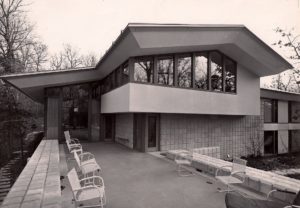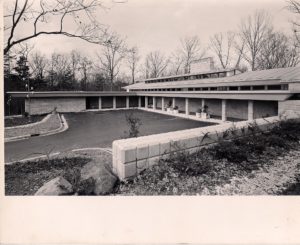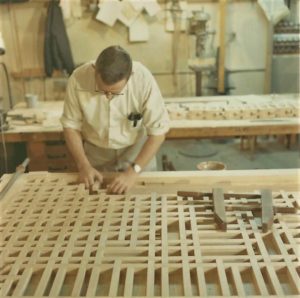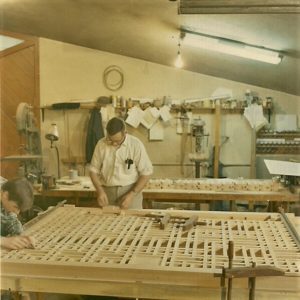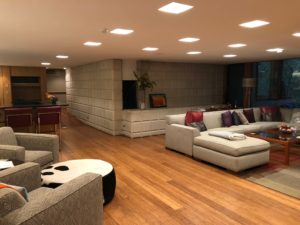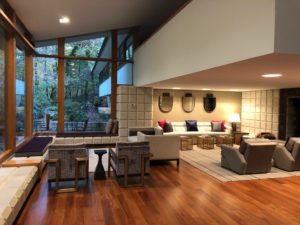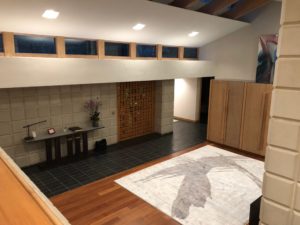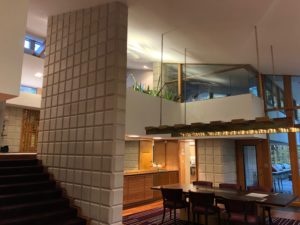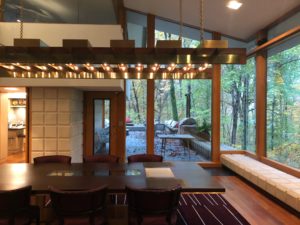Location: Durham, North Carolina
Architect: Alden B. Dow
In 1963 the president of Duke University, Douglas M. Knight, approached Alden B. Dow with a request for a home. Completed in 1966, the low-slung home is nestled into the edge of a beautiful forest on 436 acres. Project documents indicate a house of 10,655 square feet and a total estimated cost of $379,971.
A ribbed copper roof caps what appears at first glance to be an exterior made of Unit Blocks. In fact, the architect used flat beveled squares called “Zee blocks” or block faces that were bonded to the exterior as well as the interior walls.
A long covered walkway leads to a massive wooden front door that is virtually a mosaic of pieces of colored glass. The door was designed and constructed by Mr. Dow’s master carpenter Ted Gwizdala in the shop of the Home and Studio. The front door, as well as another custom door used by the family, came to a cost of $3,907 including crating and freight.
The house has a generous entry that steps down to the living room and the large open spaces one would expect of a semi-public residence designed for entertaining. Tidewater Red Cypress is used extensively throughout the home.
Among Mr. Dow’s personal papers in the Archives is a letter written in 1975 in which he responds to a request for information about the house from two Duke University students. In it he mentions some of the things that give the building its character:
“First of all, there is an entrance door that is complex enough to attract your attention and it opens into a fair-size hall. Both the host and visitors enjoy this first contact as well as the last, so this hallway is large enough to accommodate graceful meetings for a few people.”
“This house developed largely from the building site – the top of a hill on the living room side looking down into a heavily wooded valley. Family quarters are on one end; a study and guest rooms on the other. Spaces are not simple and understood at the first glance.”
“The dining room is lighted by several small lightbulbs held in a frame that is hung from the ceiling over the table. The many sources of light make all the tableware glisten.”
Mr. Dow summed up both the house and his philosophy at the end of his letter when he wrote, “Facts and feelings designed and built this house and I am sure if you visited the house itself, you might better understand why it is the way it is.”


